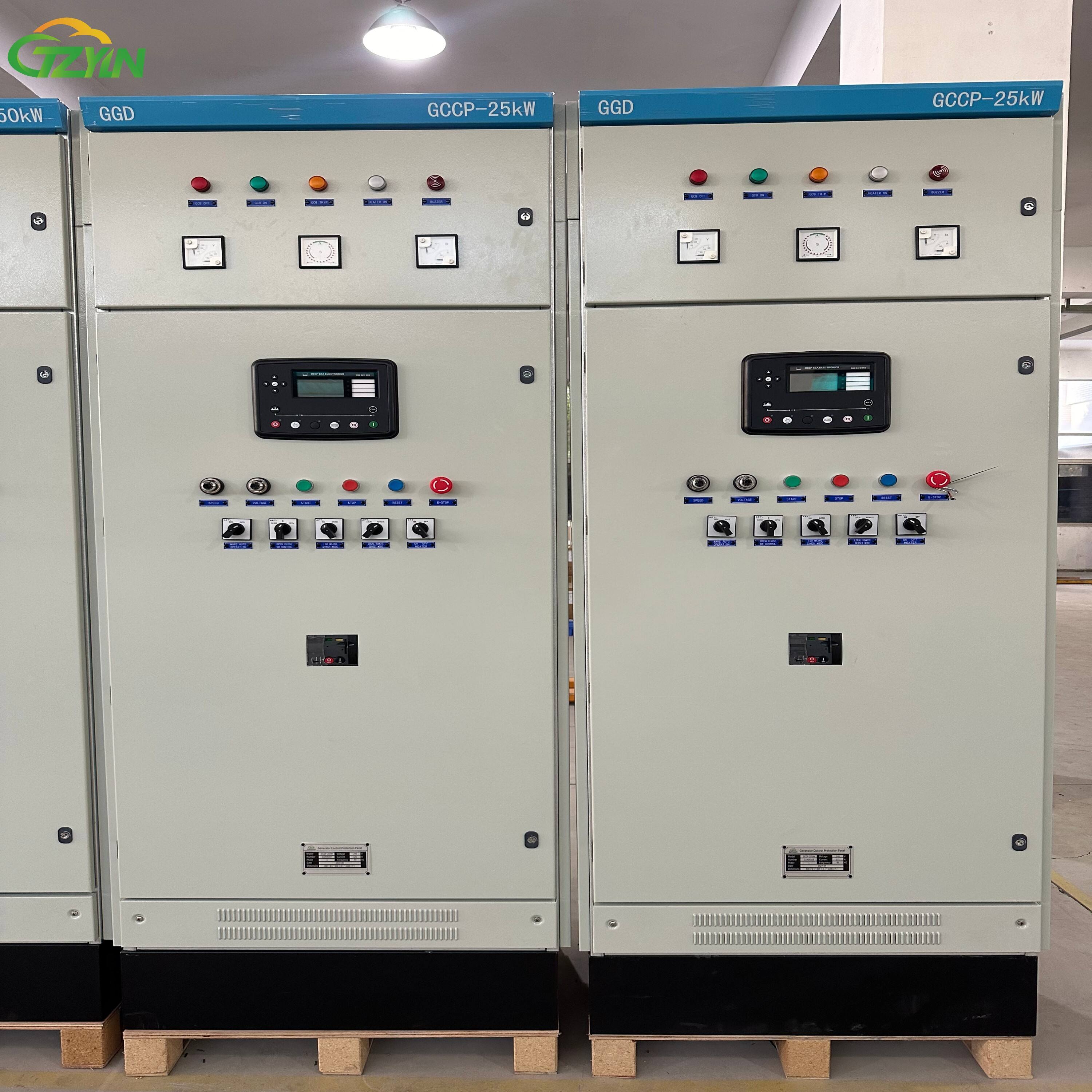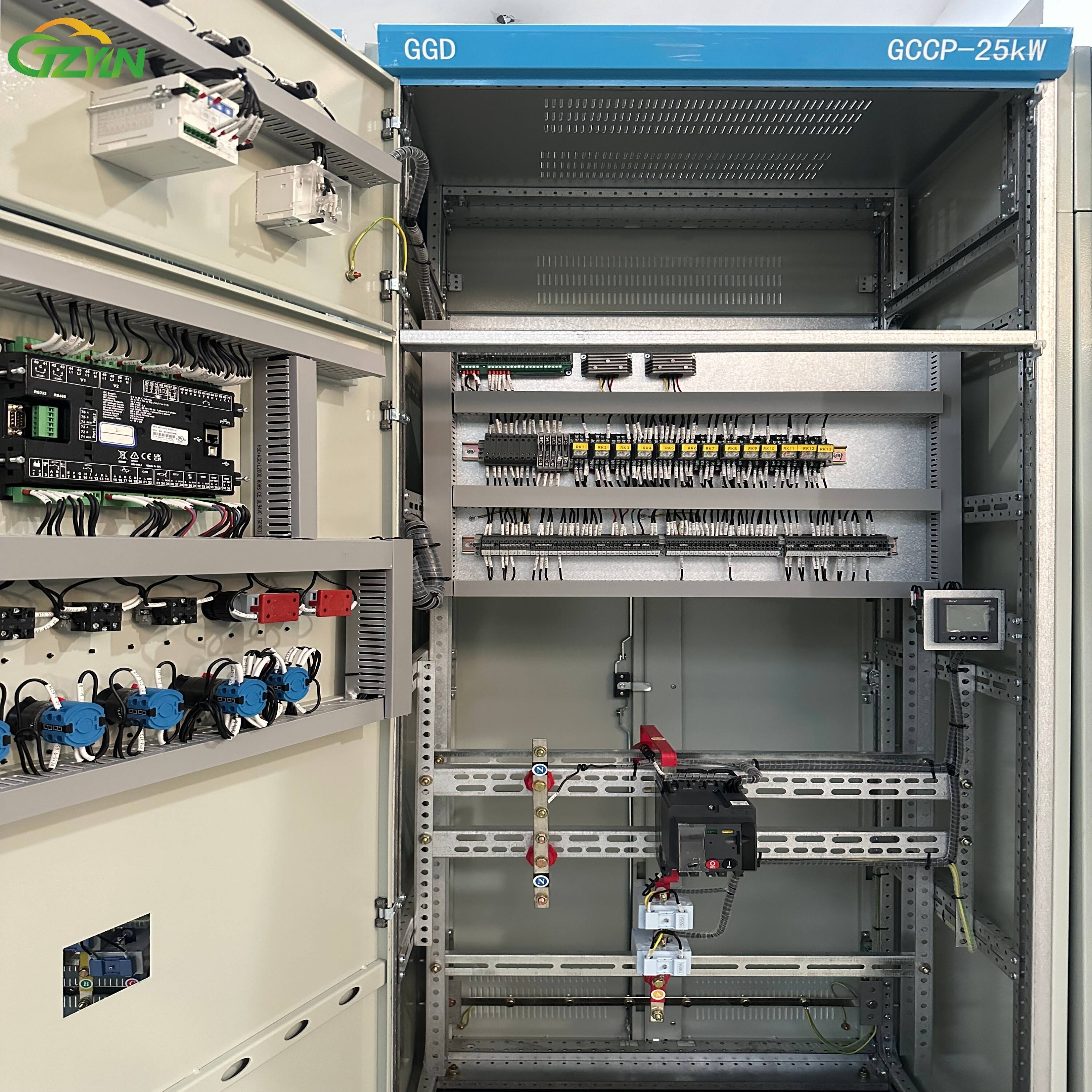102, 1st Floor, Building 3, Juze Center, No. 105 Gaoxin Avenue, Shangjie Town, Minhou County, Fujian Province +86 177 0691 9203 [email protected]
Parallel control cabinet is an automatic control device used for joint power supply of multiple generator sets.
It can achieve functions such as automatic start-up, synchronous operation,
load distribution, and disconnection of generator sets. Through advanced control technology
and protective measures, the parallel control cabinet ensures the stability and safety of each unit
during parallel operation, while improving the reliability and economy of the power supply system.
What is a parallel generator?
A parallel generator is a device that connects two generators of the same brand, type,
and size together to synergistically provide double the power. This configuration meets the power
demand of equipment or buildings by increasing the power supply.
What is the working principle of parallel generators?
Synchronous operation: Before parallel generators are put into the grid,
it is necessary to ensure that the frequency, voltage, and phase of each generator
are consistent with the grid. This process is called synchronization.
Load allocation: After parallel connection, power generators will automatically allocate
loads based on their respective power capacities to ensure system stability and efficiency.
What are the technical requirements for parallel generators?
Frequency matching: All parallel generators must have the same frequency, typically 50Hz or 60Hz.
Phase sequence consistency: The phase sequence of the generator must be consistent with
the phase sequence of the power grid, otherwise it will cause three-phase imbalance.
Voltage stability: The voltage amplitude and phase of the generator should be the same as
the grid to prevent current surges and voltage fluctuations.
Control system: A reliable and high-performance control system is required to monitor
and control the operating status of all generators.

What are the three main condition for paralleling of generators?
Same type: Generators operating in parallel should have the same type, model, and rated power.
Only generators of the same type can jointly provide electrical energy in parallel operation,
ensuring stable voltage and current for the load.
Same rated voltage: When generators are running in parallel, the rated voltage of each
generator should be the same. If the voltage is different, it will lead to uneven distribution of
electrical energy between generators, thereby affecting the quality of electrical energy supply.
Same phase sequence: When the generator operates in parallel, the phase sequence of
the generator should be the same. Phase sequence refers to the order in which the voltages of
each phase in three-phase alternating current are in sequence. If the phase sequence is different,
it can lead to uneven distribution of electrical energy between generators, and may even
cause faults such as phase to phase short circuits.
Same frequency: The frequency of the generator must be the same as the frequency of the grid,
which is one of the basic requirements for grid connection. Frequency matching can ensure that
the generator can be smoothly integrated into the grid, avoiding power quality issues caused
by frequency differences.

Phase consistency: The voltage phase of the generator should be consistent with the phase
of the grid voltage. The consistency of phase is one of the key factors to ensure that
the generator can synchronize with the grid.
Parameter matching: When generators are running in parallel, the resistance, inductance,
capacitance, and other parameters of each generator should be matched.
This can ensure balanced distribution of electrical energy between generators
and avoid excessive interaction of electrical energy between generators.
Synchronization of control system: When generators are running in parallel,
a synchronizer control system is required to ensure that the frequency, phase, voltage,
and other parameters of each generator remain consistent. Only synchronous generators
can effectively cooperate and jointly provide stable electrical energy to the load.